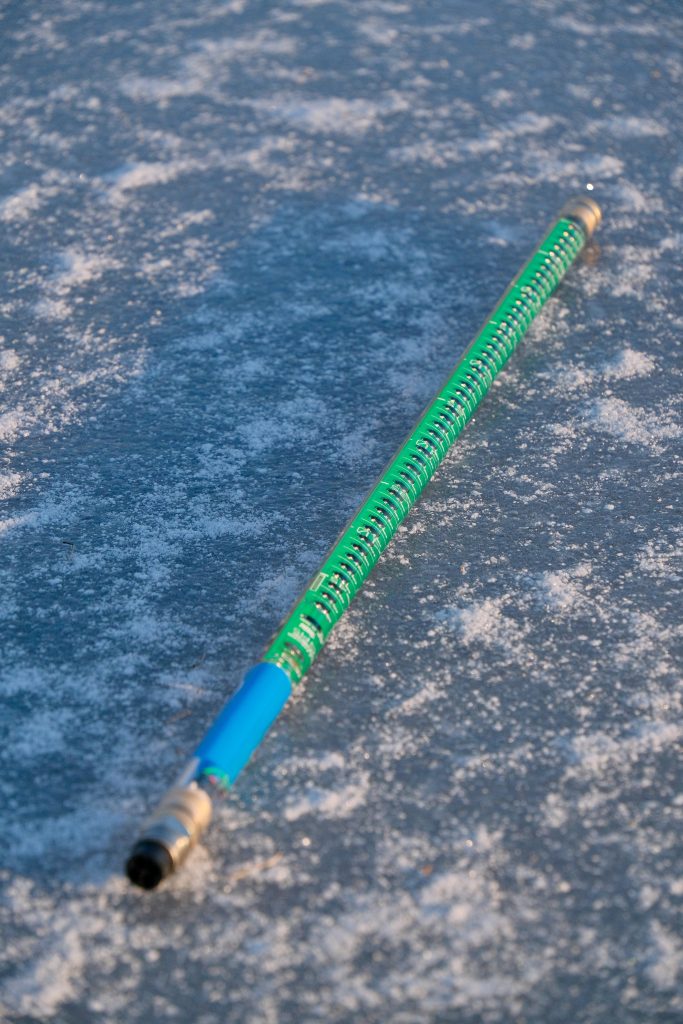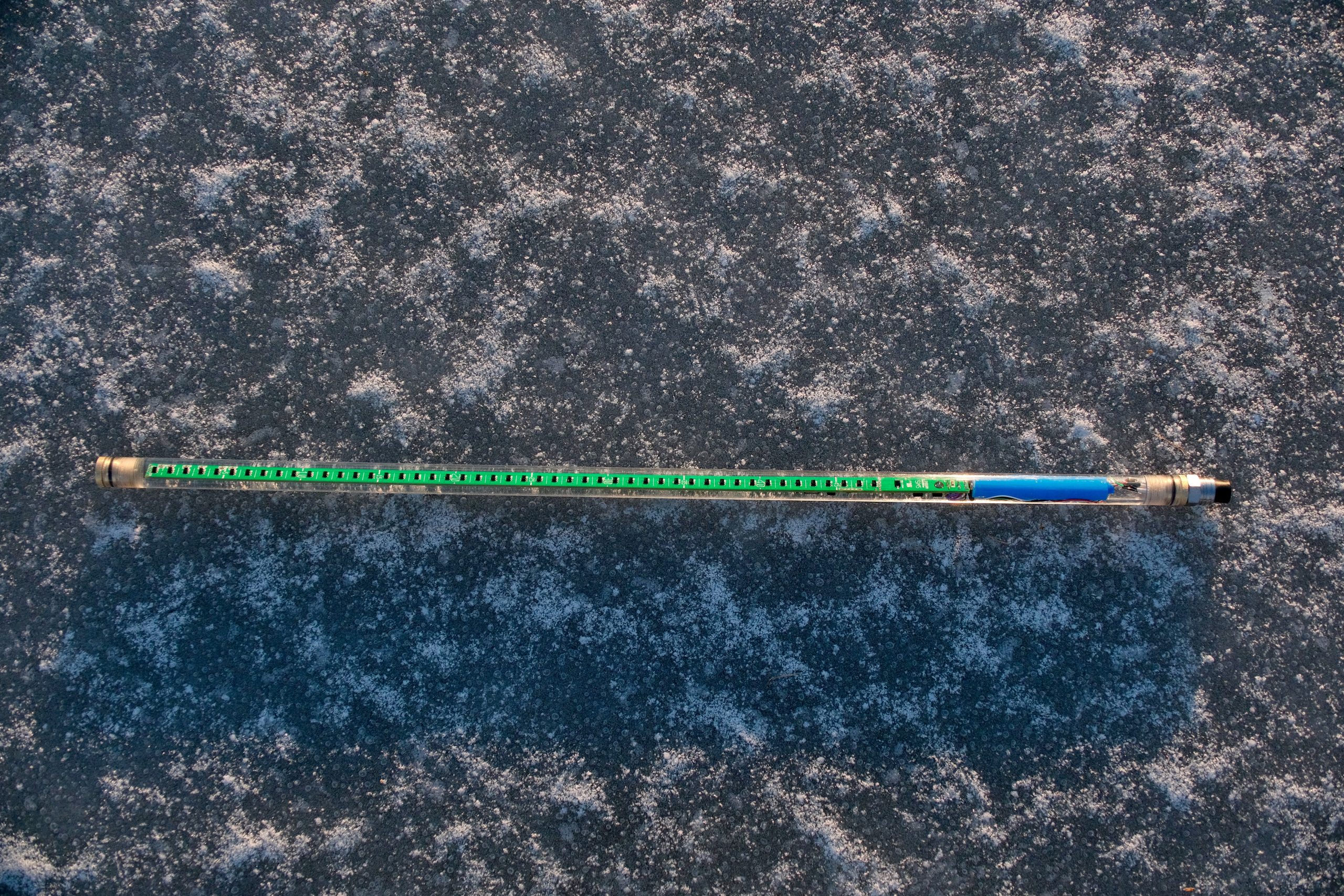The most original SediMeter since the original SediMeter 40 years ago
All SediMeters up until now have had the same basic sensor logic: Light up one LED at a time, while measuring the light on several photodetectors (PD) simultaneously. That works for erosion and sediment monitoring under water since there is no ambient NIR light, and also above water at night. However, above water daytime the sensor gets “blinded” by sunlight. The SM5 finally solves this.
1. Measuring Each Photo Detector Individually
In the SM5, like before a single LED is lit at a time, but additionally, each PD is measured individually. This means that any OBS level that is buried and in darkness will keep measuring the sediment level no matter how bright the sun is shining on the exposed part of the instrument. The result is a sensor that works for detecting erosion and sedimentation above and below water, daytime as well as at night.
Three Channels and Color Image for Optimal Sediment Monitoring
The SM5 measures each PD individually, together with total reflection, and stores it as a third channel of data. This channel will exhibit a large value when exposed to air, whether at day or night. The two channels from SM4 are maintained, i.e. direct and oblique backscatter. The software can show the three channels together as a false color image, where you can choose which RGB color to represent which dataset. The direct and oblique backscatter channels are used to estimate sediment level and erosion, while the third channel can be used to detect the water level, or the soil (or snow) level on land.
2. Longer Sensor: 48, 96, 144…
The second goal was a longer sensor. Since there is a maximal length of PCB that industry can fabricate, we have placed OBS detectors as long as we could on one side, and the control logic on the reverse side. At the same time we made the PCBs stackable. The result is that we can offer sensors for sedimentation and erosion monitoring with virtually any length you wish. The base version SM5A has 48 OBS detectors, the SM5B has 96 detectors, the SM5C has 144 detectors, etc.
3. Improved Turbidimeter
The third and final goal was an even better ISO turbidimeter. The SM5 has a stabilised laser with a feedback-loop for the best possible long-term accuracy. The accelerometer is also retained but only returns a handfull of measurements, for tilt determination (if you want to measure vibration or use the instrument as a SediSond, consider the SM4P). The SM5 also reports temperature, battery voltage, and NIR background light.


